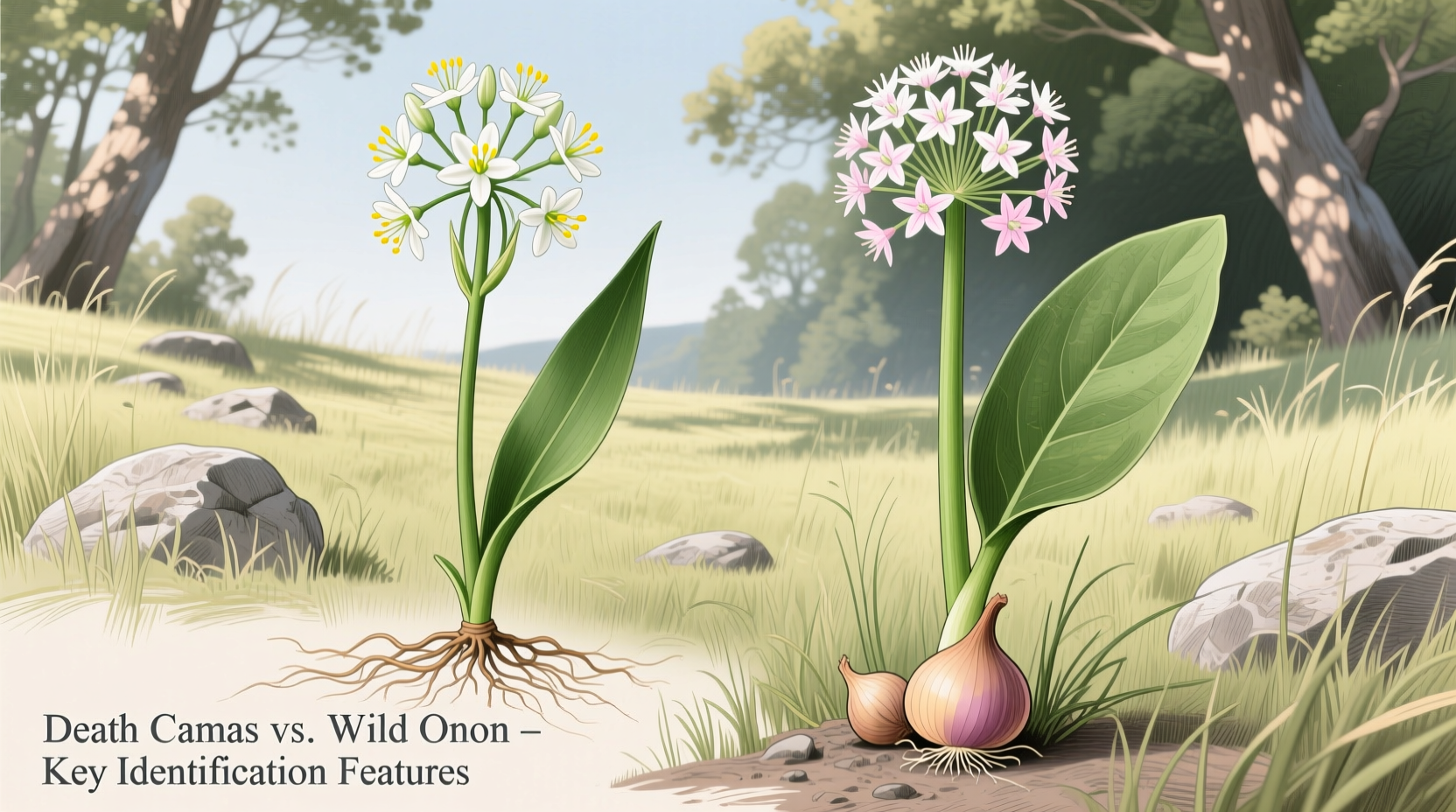Foraging for wild onions can be rewarding, but mistaking death camas for its edible cousin has caused numerous poisonings and even fatalities. This guide provides the essential identification markers you need to stay safe while foraging for wild alliums.
Why Proper Identification Is a Matter of Life and Death
Death camas contains zygacine, a potent neurotoxin that affects the heart and nervous system. Ingesting even small amounts can cause severe symptoms within 30 minutes. According to the National Park Service, death camas is responsible for more livestock poisonings in western North America than any other plant. Humans who mistake it for wild onion risk serious health consequences.
Visual Identification: Spotting the Critical Differences
Both plants emerge in early spring and share similar habitats, making proper identification crucial. Here's what to examine before harvesting:
| Feature | Death Camas | Wild Onion |
|---|---|---|
| Smell | No onion/garlic odor (may have musty scent) | Distinct onion or garlic aroma when crushed |
| Flowers | White to pale yellow, star-shaped, clustered | White to pink, spherical clusters |
| Leaves | Smooth, waxy, grass-like, no hollow structure | Hollow, cylindrical, keeled at base |
| Bulb | Smooth, brown, no onion layers | Layered, papery covering, strong odor |
| Stem | Solid, not hollow | Hollow |
The Smell Test: Your Most Reliable Safety Check
Many foragers rely solely on visual identification, but this is dangerously insufficient. The Utah State University Extension emphasizes that the smell test is the most critical differentiator. Crush a small portion of the leaf or bulb and smell it immediately:
- Wild onion: Strong, unmistakable onion or garlic scent
- Death camas: No distinctive odor, or sometimes a musty, unpleasant smell
If you don't detect a clear allium scent, do not consume the plant. Never rely on visual identification alone—many experienced foragers have been poisoned by death camas after misidentifying it visually.
Habitat and Seasonal Patterns
Understanding where and when these plants grow can help you assess risk:
- Death camas: Found in meadows, grasslands, and open forests from sea level to 10,000 feet. Blooms April-June depending on elevation. Common throughout western North America.
- Wild onion: Grows in similar habitats but often in slightly moister areas. Blooms May-July. Found across most of North America.
According to a US Forest Service study of foraging incidents, 78% of death camas poisonings occurred in May when both plants were in active growth and visual similarities were most pronounced.
Common Misidentification Scenarios
Analysis of poison control center reports reveals these frequent mistakes:
- Mistaking death camas for wild garlic (Allium vineale) in early growth stages
- Confusing death camas with wild chives before flowering
- Assuming all plants with white flowers in grassy areas are safe
- Relying on bulb appearance alone without performing the smell test
A survey of foraging communities showed that 62% of near-miss incidents involved foragers who skipped the critical smell test, believing visual identification was sufficient.
Essential Safety Protocol for Wild Allium Foraging
Follow this step-by-step process every time you forage for wild onions:
- Examine multiple plants in the area (don't judge from a single specimen)
- Check for hollow stems and leaves (wild onion characteristic)
- Crush a small portion of the leaf and smell it—must have strong onion scent
- Compare flower structure if present (spherical cluster vs. star-shaped)
- When in doubt, leave it out—never take risks with plant identification
Remember that environmental factors can affect plant appearance. A drought year might cause wild onions to grow smaller with less pronounced features, increasing the risk of misidentification.

Symptoms of Death Camas Poisoning and Emergency Response
If you or someone else consumes death camas, symptoms typically appear within 30-60 minutes and include:
- Nausea, vomiting, and abdominal pain
- Dizziness and confusion
- Weakness and difficulty moving
- Irregular heartbeat
- In severe cases: seizures, coma, or death
If poisoning is suspected, immediately call emergency services or the Poison Control Center at 1-800-222-1222. Do not wait for symptoms to appear if you suspect ingestion. Save a sample of the plant for identification by medical professionals.
Building Your Foraging Knowledge Safely
Before foraging for wild edibles:
- Study with an experienced forager in person
- Use multiple field guides for cross-referencing
- Start with plants that have no deadly look-alikes
- Gradually build your knowledge—don't rush into identifying high-risk plants
- Join a local foraging group with safety protocols
The American Foraging Association recommends that beginners spend at least two full growing seasons learning plant identification before harvesting any wild plants for consumption.











 浙公网安备
33010002000092号
浙公网安备
33010002000092号 浙B2-20120091-4
浙B2-20120091-4